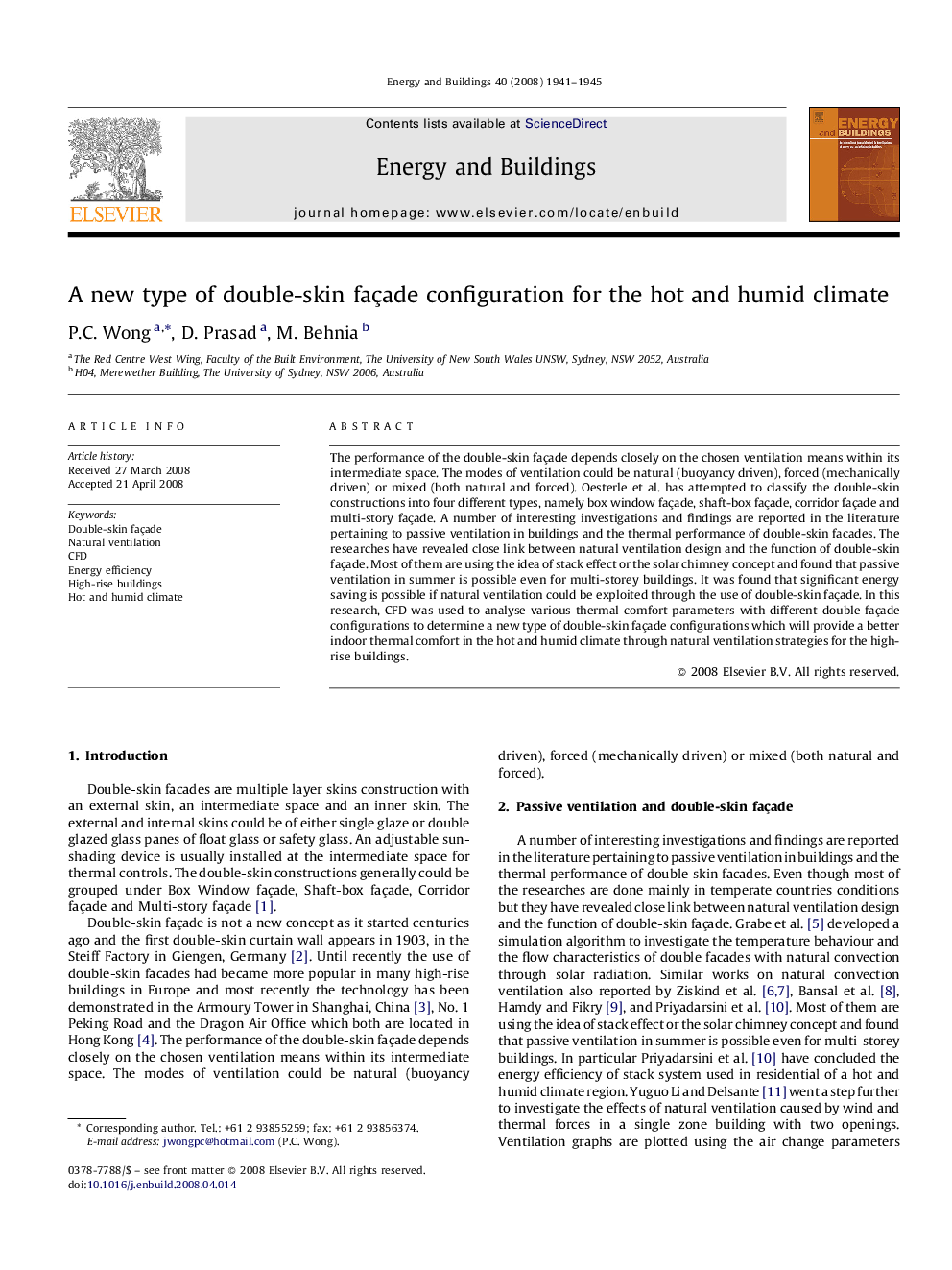| Article ID | Journal | Published Year | Pages | File Type |
|---|---|---|---|---|
| 265067 | Energy and Buildings | 2008 | 5 Pages |
The performance of the double-skin façade depends closely on the chosen ventilation means within its intermediate space. The modes of ventilation could be natural (buoyancy driven), forced (mechanically driven) or mixed (both natural and forced). Oesterle et al. has attempted to classify the double-skin constructions into four different types, namely box window façade, shaft-box façade, corridor façade and multi-story façade. A number of interesting investigations and findings are reported in the literature pertaining to passive ventilation in buildings and the thermal performance of double-skin facades. The researches have revealed close link between natural ventilation design and the function of double-skin façade. Most of them are using the idea of stack effect or the solar chimney concept and found that passive ventilation in summer is possible even for multi-storey buildings. It was found that significant energy saving is possible if natural ventilation could be exploited through the use of double-skin façade. In this research, CFD was used to analyse various thermal comfort parameters with different double façade configurations to determine a new type of double-skin façade configurations which will provide a better indoor thermal comfort in the hot and humid climate through natural ventilation strategies for the high-rise buildings.
